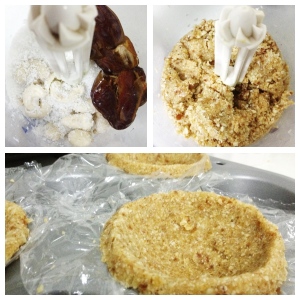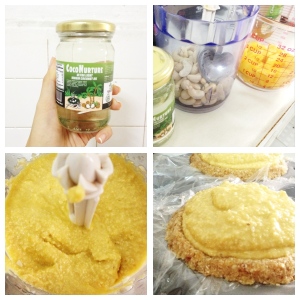A few weeks back, Ditas from CocoNurture emailed us and asked if we were keen to sample her company’s natural extra virgin coconut oil. We were thrilled as we have been wanting to try coconut oil after hearing wonderful benefits of using coconut oil in cooking or baking.
Before she mailed us the items, we did our own research about coconut oil and the myths behind this oil. So what is the differences between extra virgin coconut oil and normal coconut oil found in the market?
Coconut oil is commonly divided into two broad categories:
- RBD (refined, bleached, deodorized)
- Virgin
The difference between the two is in the amount of processing the oil undergoes.
Refined coconut oil is commonly regarded as lower quality than virgin oil and is typically made from copra (Dried kernel-meat) of the coconut, which is made by drying coconut in the sun.
Virgin coconut oil is called “VCO” in the coconut oil industry as this form of coconut oil processing is the most unrefined and most natural form and no artificial filtering or expeller pressing is used. The oil remains in its most natural form and retains a rich smell and sweet taste of coconut. Most virgin oils are extracted by a number of methods. High temperatures and chemical solvents are not used, so the oil retains its naturally occurring phytochemicals (plant chemicals) which produce a distinctive coconut taste and smell.
How do we know if we bought a good quality coconut oil?
Good quality coconut oil should taste and smell like coconut. It should be a very fine oil and will quickly melt in the palm of your hand with body heat. If it does not solidfy or melt quickly you know it is much thicker and an inferior oil. Good quality coconut oils should have a shelf life of at least 2 years without any deteriorate of the oil at all. When cooking with coconut oil, the oil will fry at very high temperatures and good quality ones can be mixed in both hot and cold drinks.
For our first recipe with coconut oil, we decided to try making raw mango tart inspired by eat green cake!
RAW MANGO COCONUT LIME TART
Raw, Vegan, GF. Makes 3 tarts
INGREDIENTS
CRUST
1/2 cup desiccated coconut
1/2 cup cashew nuts
1 cup medjool dates (I used 10 of them)
pinch of salt
FILLING
1 1/2 cups ripe mango flesh (I used 1 regular thai mango)
1/2 heaping cup of cashew
1 tbs agave
1 tsp lime juice
1 tbs coconut oil
pinch of salt
TOPPING
Desiccated coconut
Lime zest
HERE’S HOW:
1) Blend all the crust ingredients and press it into cupcake moulds. I used muffin trays because i didn’t have cupcake moulds on hand. Also use cling wrap to line tray for easy removal later on.
2) Leave your crusts in the freezer to harden. (I left it overnight to harden after making around 12 midnight the day earlier.)
3) In the meantime, process the filling. Taste as you go along and add a little more agave or mango if your mangoes aren’t that ripe. Pour mixture into your tarts. Leave in the freezer to harden. (I did this the next morning and took them out around 11pm this evening.)
4) Serve chilled and top with lime zest and coconut!
The mango tart was a hit and was not too sweet. The crust was crumbly and nutty (if you are not a coconut fan, you might want to use less coconut in the mix). Next time round, I will make more tarts out of the crust mix as each tart was too heavy and too thick. Smaller mini size tarts will be a hit if we are serving this at a party or for fun small snack time. Overall, it was a delightful fruity tart and we left it out to de-frost for about 15-20 minutes before slicing.
Note: We do not profit from any of the sales from the company’s products nor do we have any ownership in the business of the company.




